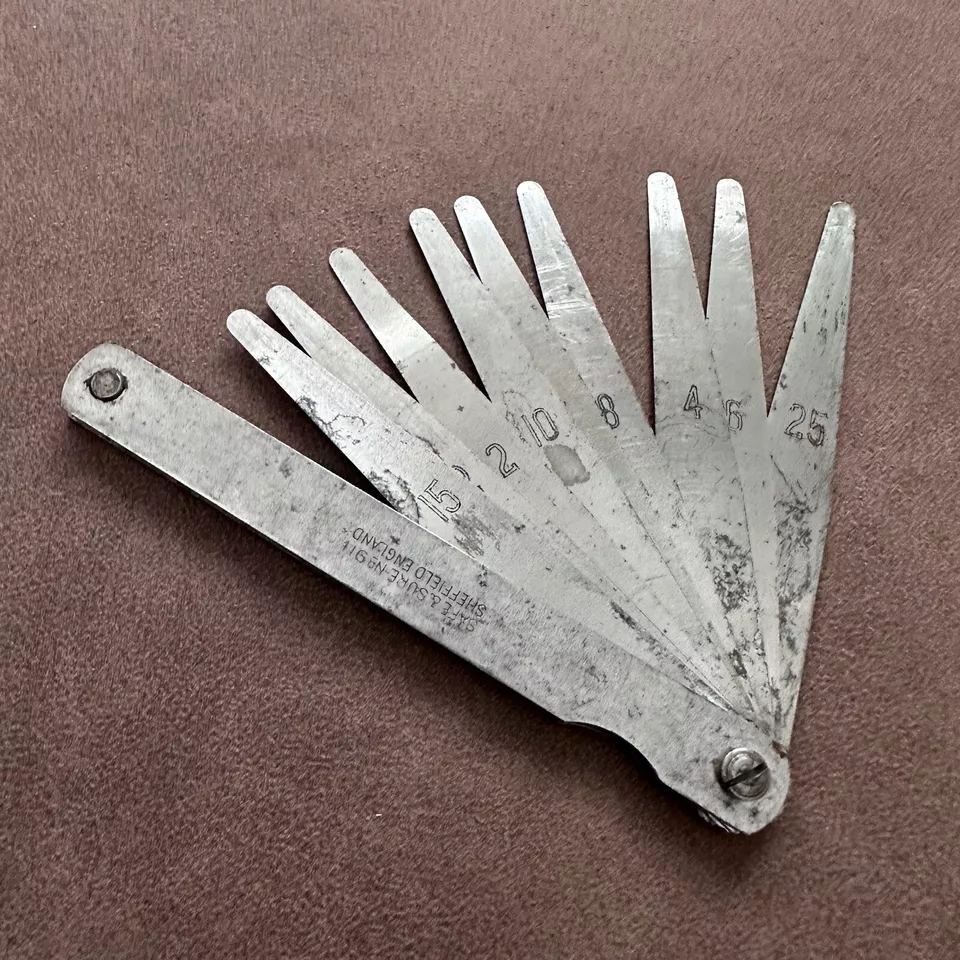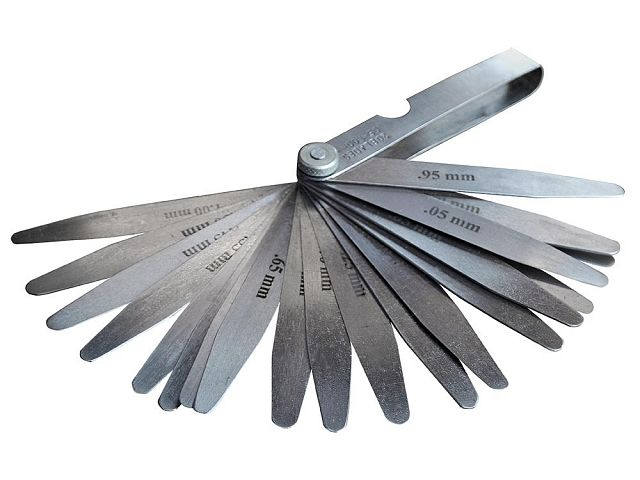In the complex world of engineering and mechanics, there exists a modest yet indispensable tool: the feeler gauge. With its set of thin, calibrated metal blades, the feeler gauge has been a trusted companion for engineers, mechanics, and technicians for over a century. Its purpose is simple but essential: to measure the gaps and clearances between mechanical parts with remarkable accuracy. Let’s delve into the history, design, and enduring significance of the feeler gauge, exploring why this seemingly humble tool remains a staple in toolkits across various industries.
A Brief History: Origins of the Feeler Gauge

The feeler gauge’s history traces back to the early 20th century, a time when industrial machinery and manufacturing processes were rapidly advancing. As these machines grew more complex, the need for precise measurements of gaps and clearances between parts became critical. Engineers and machinists needed a reliable way to ensure that moving parts had the correct spacing for optimal performance and longevity.
The feeler gauge was developed to address this need, marking a significant milestone in precision measurement. Its design, which has remained largely unchanged, consists of a set of thin metal blades, each with a specific thickness. By inserting these blades into gaps, technicians can determine the precise spacing required. As industry demands grew, the feeler gauge became indispensable, cementing its role in fields that rely on precision and accuracy.
How the Feeler Gauge Works: Measuring Gaps with Ease
The feeler gauge is a straightforward tool, but its simplicity belies its importance. It consists of a series of blades, each made from thin, high-quality metal. These blades vary in thickness and are calibrated to measure gaps as small as a few thousandths of an inch. The blades are usually stacked together in a folding or fanned design, allowing users to select the desired blade and slide it into the gap they want to measure.
To use a feeler gauge, a technician or engineer inserts one or more blades between the parts they’re measuring. By testing which blade or combination of blades fits snugly, they can determine the exact clearance of the gap. This method is both quick and accurate, enabling users to verify that components meet precise specifications. The feeler gauge’s ease of use has made it an essential tool in a wide range of industries where exact measurements are crucial.
Applications in the Automotive Industry: Precision in Motion
One of the feeler gauge’s most common uses is in the automotive industry, where precision is vital for both performance and safety. Mechanics rely on feeler gauges for a variety of tasks, including:
- Setting Spark Plug Gaps: Proper spark plug gaps are essential for engine efficiency and performance. A feeler gauge allows mechanics to adjust the gap to the manufacturer’s specifications, ensuring optimal ignition and fuel efficiency.
- Adjusting Valve Clearances: Valve clearance plays a crucial role in engine operation, affecting how fuel and air move through the engine. By measuring and adjusting these clearances with a feeler gauge, mechanics can prevent engine wear and improve performance.
- Checking Brake Components: Feeler gauges are also used to measure the spacing between brake pads and rotors, ensuring the brakes function properly and safely.
The automotive industry relies heavily on feeler gauges for these tasks and more, underscoring the tool’s importance in maintaining high standards of precision and safety.
The Role of Feeler Gauges in Manufacturing: Ensuring Quality and Accuracy
In the manufacturing sector, feeler gauges are indispensable for quality control and assembly processes. When machinery parts need to fit together seamlessly, even the smallest misalignment can cause issues. Manufacturers use feeler gauges to measure clearances between components, verify that parts are within tolerance, and ensure that machines operate smoothly.
Feeler gauges play a role in tasks such as:
- Assembling Machine Components: Manufacturers use feeler gauges to confirm that parts are fitted correctly and maintain the necessary clearances. This helps prevent mechanical failure and prolongs the lifespan of the equipment.
- Checking Finished Products: During the quality control phase, feeler gauges are often used to inspect products for consistency and accuracy. This process is essential in industries where precision directly impacts product functionality.
- Maintenance and Repairs: In addition to initial assembly, feeler gauges are used in regular maintenance, helping technicians identify and address wear in machine parts that may lead to costly repairs or downtime.
The feeler gauge’s role in manufacturing goes beyond simply measuring gaps; it helps maintain product quality, enhance safety, and boost operational efficiency.
Engineering Applications: Precision in Design and Maintenance

Engineering fields, especially those that focus on aerospace, automotive, and heavy machinery, rely on feeler gauges to uphold rigorous standards of accuracy. Engineers utilize feeler gauges in both design and maintenance tasks, making this tool essential to their work.
- Design Validation: Engineers use feeler gauges to verify the accuracy of assembled parts, ensuring that designs meet specifications before they are mass-produced.
- Routine Maintenance: Many engineering applications require routine inspections. Feeler gauges provide a quick way to measure wear and tear on components, allowing engineers to address issues before they escalate.
- Field Repairs: In remote or challenging environments, engineers rely on feeler gauges for quick and precise measurements, enabling them to make repairs on the spot.
The feeler gauge’s versatility and reliability make it a vital tool for engineers, facilitating both innovation and excellence in their work.
The Feeler Gauge in a Digital World: Why This Tool Endures
Despite the rise of digital and electronic measurement tools, the feeler gauge remains relevant. Its straightforward design and ease of use have allowed it to stand the test of time. Unlike electronic tools, feeler gauges don’t require batteries or software updates, making them highly dependable. They are also incredibly durable, often lasting for years with proper care.
Digital tools may offer additional features, but the feeler gauge’s ability to quickly and accurately measure gaps has ensured its continued presence in toolkits worldwide. Professionals value its simplicity, dependability, and affordability, and many find that it complements modern tools rather than being replaced by them.
Conclusion: The Timeless Impact of the Feeler Gauge on Precision Measurement
The feeler gauge, with its unassuming design and essential purpose, has become an iconic tool in the field of precision measurement. Its role in industries like automotive, manufacturing, and engineering highlights the importance of accuracy and consistency in mechanical work. Though it may be overshadowed by digital tools in some respects, the feeler gauge’s practicality and reliability make it indispensable.
As we look to the future, the feeler gauge serves as a reminder that simple, effective solutions can stand the test of time. This humble tool continues to inspire confidence among professionals, proving that even in an age of advanced technology, there is still a place for tried-and-true devices. Whether you’re a seasoned mechanic or a curious collector, the feeler gauge represents a rich legacy of engineering innovation and a dedication to precision that endures.


